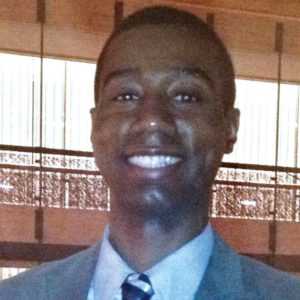Venture Philanthropy: Research Bridge Partners


How Research Bridge Partners Uses Concessionary Investment to Jumpstart Life Science Startups


Jim Graham, Managing Director of Investments at the 501(c)(3) Research Bridge Partners, is on a mission to match the best science in the middle of the country with capital and talent from biotech hotbeds on the coasts. His goal is to fund life sciences and biomedical breakthroughs by academic innovators that are developing their projects into commercially viable ventures, particularly those originating from innovators operating in what he calls “mid-continent” research universities.
As he sees it, market forces concentrate commercialization resources into a handful of self-reinforcing hubs – which is only an issue to the extent that these hubs don’t line up with the 70% of federal research investment that goes to research institutions far from any established hub. Research Bridge Partners, which was founded in 2016 and currently has a portfolio of six projects, is seeking to address that disconnect by building stronger connections between mid-continent science networks and coastal capital and talent networks.
Graham, who is based in Austin, Texas, acknowledges that it may be quite the uphill battle. He recently spoke with Chris Latham of “This Is Capitalism” about the organization’s growth strategy. Here are edited excerpts from the conversation.
CL: Where did the concept of Research Bridge Partners come from?
JG: Our CEO, Isaac Barchas, had a pre-existing relationship with Reid Hoffman, who is the co-founder of LinkedIn, an early investor in other social media companies, and a partner at the venture capital firm Greylock Partners. Isaac had spent ten years leading the Austin Technology Incubator at the University of Texas, which focused on moving great ideas from the academic setting to the commercial setting. Meanwhile, I had been an early-stage healthcare venture investor at Santé Ventures and with private investor groups in Dallas and San Antonio.
Over multiple rounds of conversations, Reid, Isaac, and I felt that it was time for a new solution to the well-known challenges of mid-continent commercialization. Star researchers at leading institutions in the middle of the county often feel they must move to the West Coast or the East Coast to see their ideas become successful ventures. This is a shame, and it hinders the mid-continent’s output of successful technology-based startups.
CL: Why take a philanthropic approach, through a non-profit, instead of a typical venture capital model?
JG: Our thesis is that capital will flow into these projects if we can identify promising research, craft a commercial strategy around the technology, put together a credible development plan, recruit one or two key hires, and tell a compelling story. Last year was a record-breaking year for new venture capital fundraising. There is no shortage of capital looking for compelling opportunities. The problem is that for most investors the speed and efficiency of building companies in Boston or the Bay Area simply outweighs the potential value of finding a diamond in the rough in the middle of the country.
So if we can do that work for them, investors will be more likely to look beyond the coastal cities. This is where the philanthropic element comes in. Research Bridge Partners does invest its own money, through Program Related Investments (PRIs). These IRS-designated vehicles pass assets from nonprofit structures into commercial entities, allowing equity investment into projects which are not able to attract market-return seeking investment capital on purely financial merits.
CL: What are some of the typical terms of your investments?
JG: Our concessionary seed investments are designed to break even on a financial basis and to generate social benefits by bringing a greater range of useful medical technologies to the patients who need them, and by bolstering ecosystems on university campuses and their surrounding communities. We prioritize projects that either have not yet formed a company or have only just done so, and have not already accepted traditional venture capital.
The terms of our investments are below market, meaning we offer the lowest interest rates allowable by law and concessionary terms on convertible notes. Our typical investment is less than $1 million. We take an active board role working with the scientific founders to guide the company through formation.
CL: How do you identify innovative institutions, researchers, and potential projects?
JG: Scalability is key. We’ve invested significantly in data, leveraging public sources to compile the academic output of 14,000 researchers in the U.S., including grant activity, patents, and publications. This tool allows us to focus our efforts on the most productive researchers across the geographically dispersed “mid-continent.”
Our analytical tools are helpful, but relationships and networks are still our most important assets. On any given campus, approximately 5% of faculty will account for 75% of commercializable output. So it’s essential to find the right people, meaning those with the best ideas, sufficient resources, and genuine interest in pushing their projects into the commercial sphere.
We stay in touch by phone and videoconferencing and visit onsite at our core university campuses with promising innovative academic researchers. Post-pandemic, we will do much more traveling than we have over the past two years.
CL: What types of projects make up the portfolio of Research Bridge Partners?
JG: We focus on life sciences and biomedical projects that we consider to be of great urgency, and which address medical needs that are mostly unmet. These projects could have big positive impacts, but have relatively small amounts of total funding. We see better diagnostics and therapies as essential to helping people lead healthier and more fulfilling lives in their communities. Our six portfolio projects are Asalyxa Bio, Eradivir, Erisyon, Morphimmune, Novosteo, and IpiNovyx.
Dr. Omolola (Lola) Eniola-Adefeso, at the University of Michigan Ann Arbor, is the co-founder of Asalyxa Bio, a microparticle-based immune-cell-targeting therapeutic platform. Dr. Philip S. Low, at Purdue University in Indiana, is the co-founder of Eradivir, a targeted therapeutics platform for infectious diseases; Morphimmune, a platform using hyper-targeted small molecules for reprogramming immune cells; and Novosteo, a fracture-targeting therapeutic platform for bone healing.
Dr. Edward Marcotte and Dr. Eric Anslyn, both of the University of Texas at Austin, are the co-founders of Erisyon, a single-molecule protein-sequencing platform for probing the molecular basis of disease. IpiNovyx is developing immunoproteasome-modulating therapeutics for autoimmune and inflammatory diseases. Its co-founders are Gang Lin, Ph.D., and Carl Nathan, M.D., of Weill Cornell Medicine in New York.
CL: What’s next for Research Bridge Partners?
JG: We raised a small pilot fund in 2019 to prove that PRIs could be effectively deployed against new-company creation in the mid-continent. With the early success of our portfolio, we are seeking to broaden and scale our impact with a follow-on fund. This new fund would be deployed against a select number of leading mid-continent research institutions.
We’ve had many productive conversations with high-net-worth individuals, family offices, and foundations who are interested in accelerating the commercial output of their favored research institutions. Announcements of major gifts to fund science and technology programs on campus are often accompanied by hopes of new therapies and cures. Our fund is designed with exactly that end in mind, but it does not always fit into the pre-defined “charity” or “investment” functions of the offices we are speaking with.
Now we are working to create more flexibility around the not-for-profit and investment aspects of Research Bridge Partners to meet the needs of a wider range of investment partners. But it has been gratifying to hear such positive responses to the idea of a targeted funding solution that allows great science from the middle of the county to be evaluated and metabolized by the deep, existing capital markets on the coasts.

